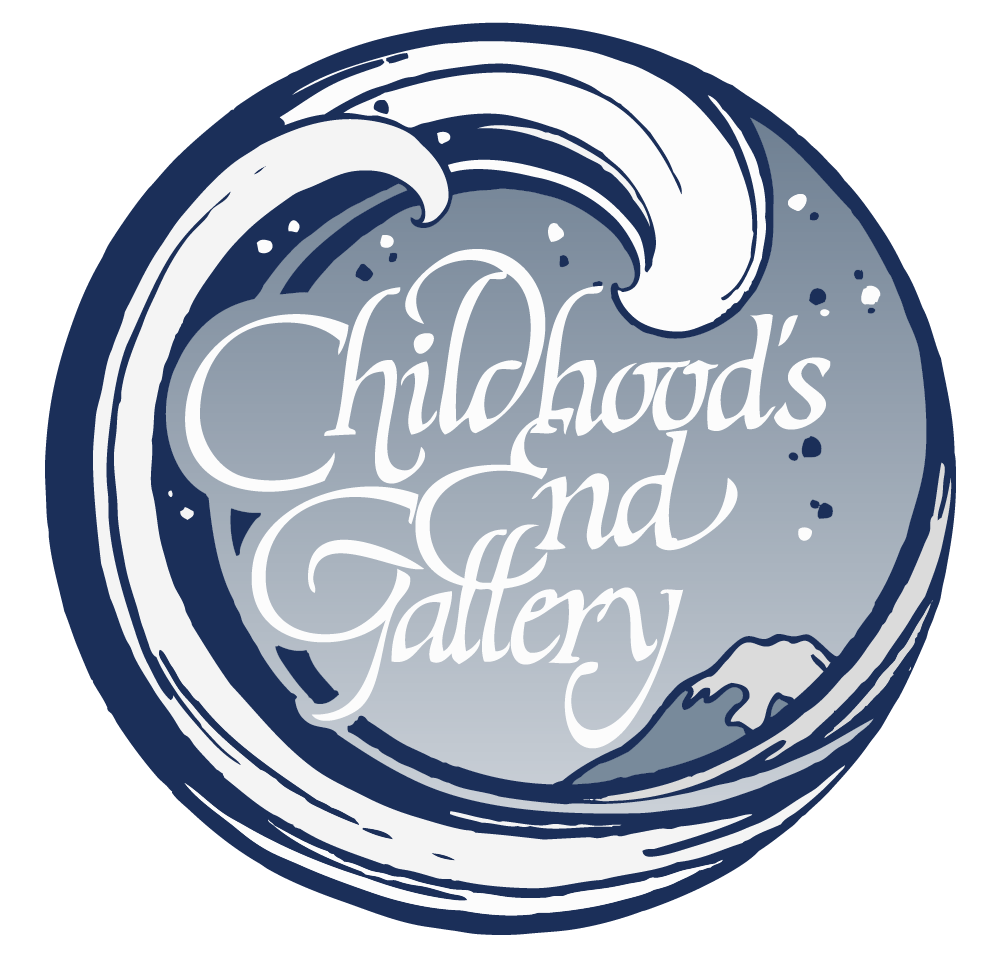Wood Types
see also: Woodworking Terms and Techniques
Heartwood - older, nonliving wood within the heart of the tree
Sapwood - soft, outer layers of recently formed wood between the heartwood and the bark, containing functioning vascular tissue of tree
Heartwood - older, nonliving wood within the heart of the tree
Sapwood - soft, outer layers of recently formed wood between the heartwood and the bark, containing functioning vascular tissue of tree
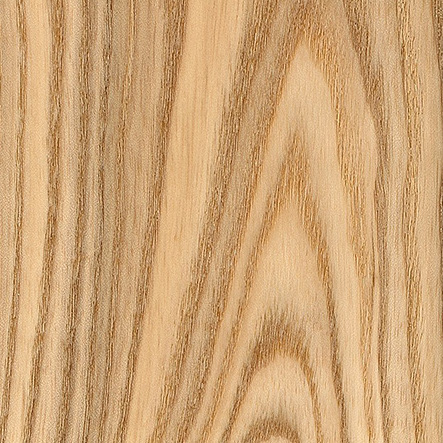
Black Ash: The heartwood is a light to medium brown color. Sapwood can be very wide, and tends to be a beige or light brown; not always clearly or sharply demarcated from heartwood. Black Ash tends to be a bit darker in color than White Ash. Currently being threatened by the emerald ash borer beetle in the United States. Black Ash is commonly used in basket weaving. The endgrain of the wood is pounded with a mallet—collapsing the weaker earlywood, and liberating the latewood to be peeled ooff in strips. The strips are subsequently collected and woven into baskets. Found in Northeastern United States and Eastern Canada.
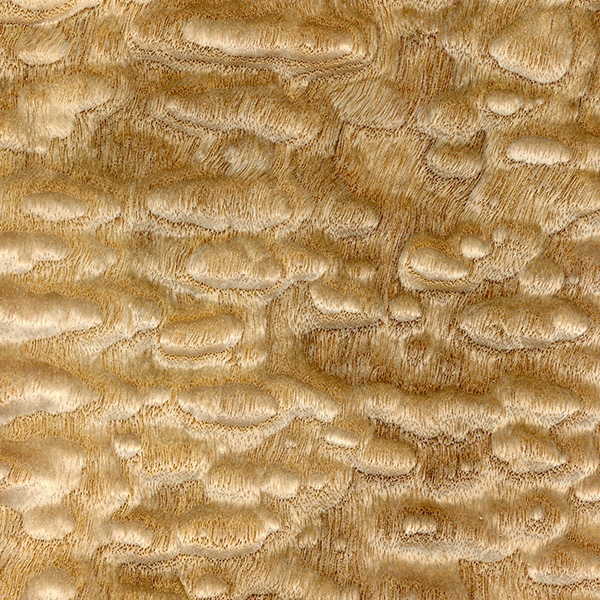
Tamo Ash: Tamo Ash has a completely unique and almost three-dimensional grain patterning and figure that looks like peanut shells. In its plain, unfigured form, Tamo Ash is very similar to the North American species Black Ash. It is anecdotally reported that the peanut figure found in higher grades of Tamo Ash are caused by vines which wrap themselves around the tree's trunk, restricting the flow of nutrients and causing the tree to grow in an uneven stop-and-go manner. Allegedly, propagators in Japan grew trees and tied ropes around the younger trees—successfully duplicating the peanut figure as the trees reached maturity. The heartwood is a light to medium brown color. Sapwood can be very wide, and tends to be a beige or light brown; not always clearly or sharply demarcated from heartwood.
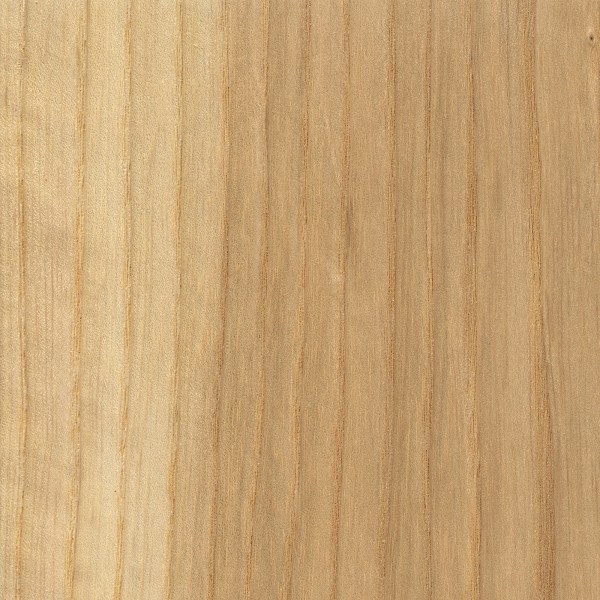
White Ash: The heartwood is a light to medium brown color. Sapwood can be very wide, and tends to be a beige or light brown; not always clearly or sharply demarcated from heartwood. Commonly used for flooring, millwork, boxes/crates, baseball bats, and other turned objects such as tool handles. When stained, ash can look very similar to oak, although oaks have much wider rays, which are visible on all wood surfaces—even on flatsawn surfaces, where they appear as short, thin brown lines between the growth rings. Ashes lack these conspicuous rays.

Bamboo: Bamboo is one of the most unique plants on earth. Unlike trees, bamboo grows initially at full width, with no tapering or horizontal growth. Some species can grow up to three feet a day! After just one year, bamboo reaches its full height, and in subsequent years, the stem (called the "culm") continues to harden. The strength of the bamboo continues to increase for the next two to four years. Although it is hard to typify a group of over one thousand different species into a single set of mechanical values, on the whole, bamboo possess some of the best stiffness/strength characteristics, and strength-to-weight ratios of any woody material on the planet.
Generally a uniform and pale yellow to almost white.
Generally a uniform and pale yellow to almost white.
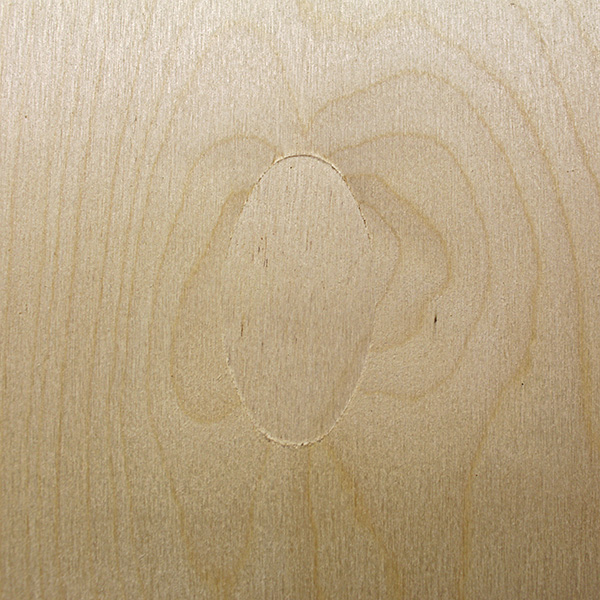
Baltic Birch: Baltic Birch is not a specific species of birch, but is a general designation of plywood from Russia, Finland, and nearby Baltic states. As with any natural wood product, quality can be variable. However, Baltic Birch plywood is generally regarded as being of higher quality than standard birch plywood.
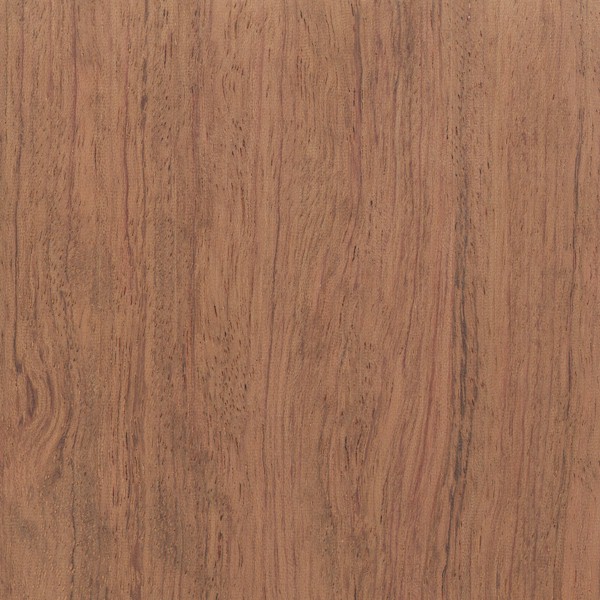
Bubinga: Heartwood ranges from a pinkish red to a darker reddish brown with darker purple or black streaks. Sapwood is a pale straw color and is clearly demarcated from the heartwood. Bubinga is very frequently seen with a variety of figure, including: pommele, flamed, waterfall, quilted, mottled, etc. Very fine texture and interlocked grain, often called African Rosewood. Found in Africa.
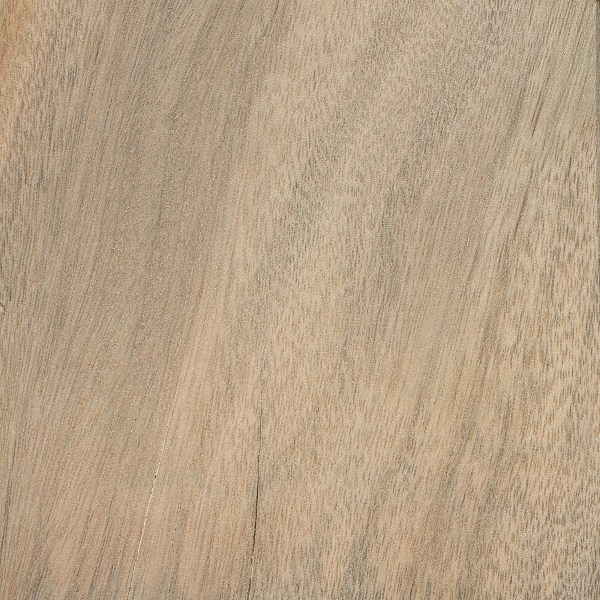
Camphor: Perhaps known more famously for its beautiful burls, Camphor is also cultivated for its aromatic oils, which are used in a variety of culinary and medicinal applications. In addition to its medicinal values, the lingering scent of Camphor is also reported to inhibit silver from tarnishing and ward off moths, and the wood is sometimes used in trunks and chests where valuables are stored.
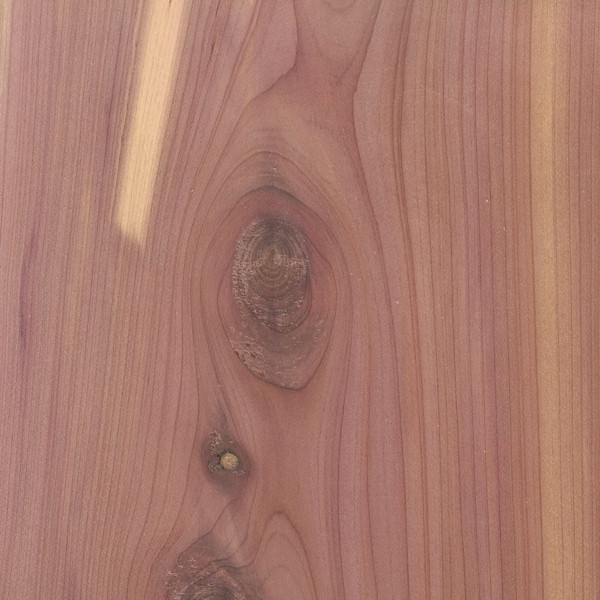
Aromatic Red Cedar: Although Aromatic Red Cedar is included in the cypress family (Cupressaceae) which includes many species of cedar, it's perhaps more closely related in junipers in the genus Juniperus. In tree form, it is more commonly called Eastern Redcedar, while the wood itself is usually referred to as Aromatic Red Cedar.
Though Eastern Redcedar trees are widely distributed throughout the eastern half of the United States, it is a very slow-growing species, and most trees harvested tend to be fairly small in diameter. Because of this, Aromatic Red Cedar boards tend to be knotty and narrow.
Though Eastern Redcedar trees are widely distributed throughout the eastern half of the United States, it is a very slow-growing species, and most trees harvested tend to be fairly small in diameter. Because of this, Aromatic Red Cedar boards tend to be knotty and narrow.
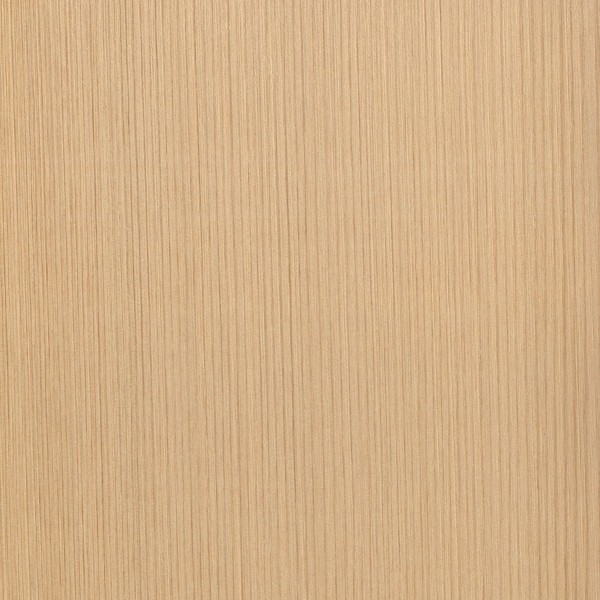
Western Red Cedar: Western Redcedar is a commercially important lumber, used in a number of applications ranging from rough-sawn lumber for use in home construction to clear quartersawn material for classical guitar soundboards.
It is a soft wood, easily dented, with a strong aroma when worked that acts as a natural moth and insect repellent. Found in the Pacific Northwest USA and Canada.
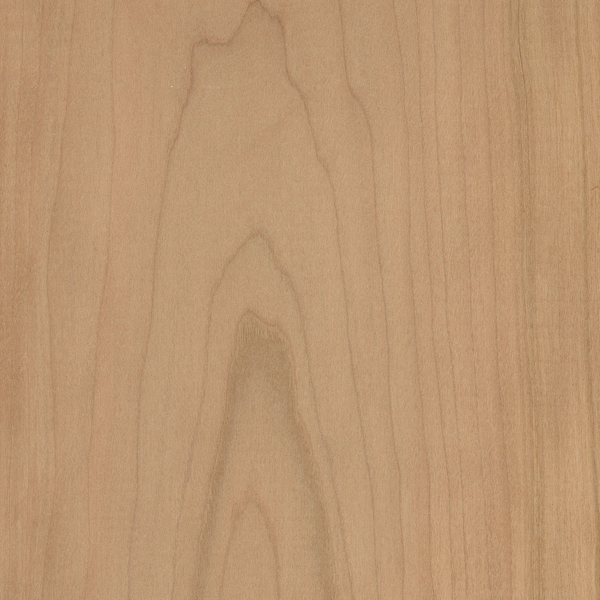
Cherry: Black cherry is known as being one of the best all-around woods for workability. It is stable, straight-grained, and machines well. Black cherry develops a rich reddish-brown patina as it ages. Not to be confused with sweet cherry, a tree native to Europe and Asia that’s the primary source of edible cherries. Found in USA and Canada.
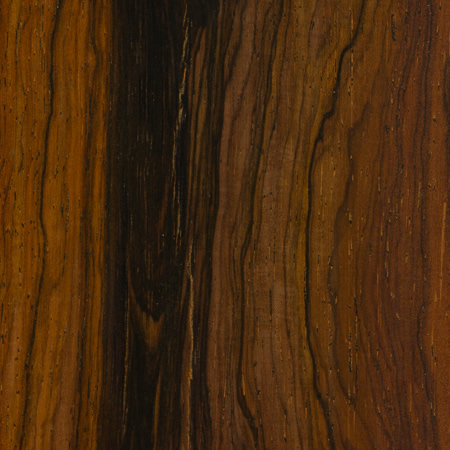
Cocobolo: Cocobolo can be seen in a kaleidoscope of different colors, ranging from yellow, orange, red, and shades of brown with streaks of black or purple. Sapwood is typically a very pale yellow. Colors are lighter when freshly sanded/cut, and darken with age. Found in Mexico, Nicaragua, and Panama.

Gabon Ebony: Heartwood is usually jet-black, with little to no variation or visible grain. Occasionally dark brown or grayish-brown streaks may be present. Can be difficult to work due to its extremely high density. So named because historically most of the wood was exported from the nation of Gabon, though today it's much more likely to be sourced from Cameroon.
There's no mistaking Gaboon Ebony as there are few woods that are deep and solid black (unless dyed), and even most species in the Diospyros genus aren't black. Other types of ebony include: Macassar (striped) Ebony, and Black and White Ebony.
There's no mistaking Gaboon Ebony as there are few woods that are deep and solid black (unless dyed), and even most species in the Diospyros genus aren't black. Other types of ebony include: Macassar (striped) Ebony, and Black and White Ebony.

Elm: Once one of the largest and most prevalent of the North American elm species, preferred as an ideal shade tree for urban roadsides. American Elm is especially susceptible to Dutch elm disease, and was ravaged by the fungal disease in the second half of the twentieth century. Because the tree is fast growing and bears seeds at a young age, it has been able to continue in areas where older trees have died, though the newer elms also succumb to the disease at a relatively young age. Consequently, large and mature American Elms are uncommon. Many disease-resistant cultivars and hybrids are being used to replace trees killed by Dutch elm disease.
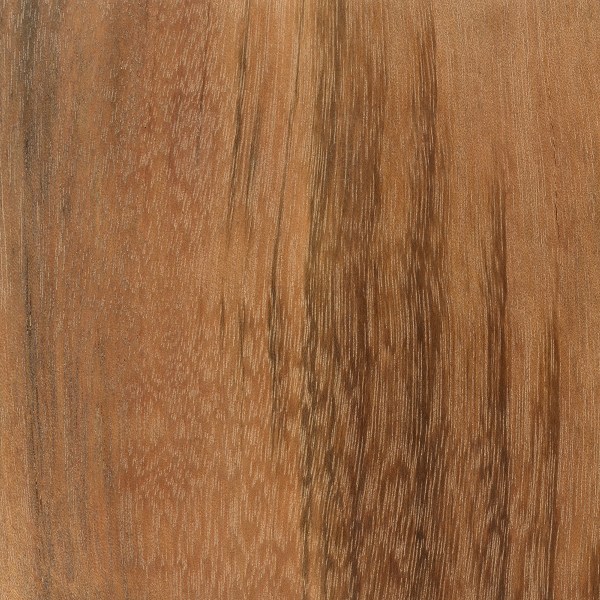
Goncalo Alves: Goncalo Alves is commonly referred to as Tigerwood or Brazilian Tigerwood among flooring dealers. The wood has superb stiffness, strength, hardness, and durability. However, density and other mechanical properties can vary widely depending on the growing site and source region. The name Jobillo is sometimes used to refer to higher grades of Goncalo Alves among woodturners.

Holly: Ideal lumber has a very uniform, pale white color with virtually no visible grain pattern. Knots are common, which can reduce the usable area of the wood. Can develop a bluish/gray fungal stain if not dried rapidly after cutting. Holly is usually cut during the winter and kiln dried shortly thereafter to preserve the white color of the wood.
Holly is typically used only for ornamental and decorative purposes. It has a fairly large shrinkage rate, with a lot of seasonal movement in service, and its strength properties are mediocre for a hardwood.
Holly is typically used only for ornamental and decorative purposes. It has a fairly large shrinkage rate, with a lot of seasonal movement in service, and its strength properties are mediocre for a hardwood.
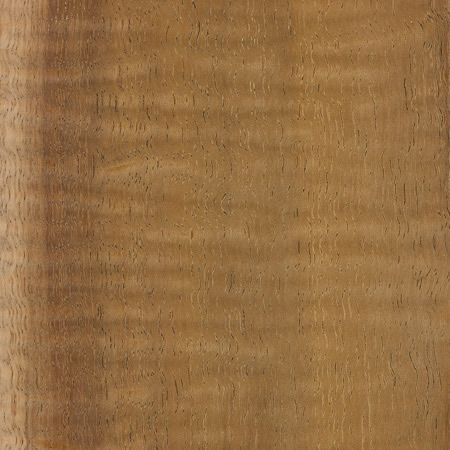
Koa: Moderately heavy wood ranging in color from golden orange to a deep reddish brown, famous for its ribbon grain and being the largest native Hawaiian tree. Found in Hawaii, USA.
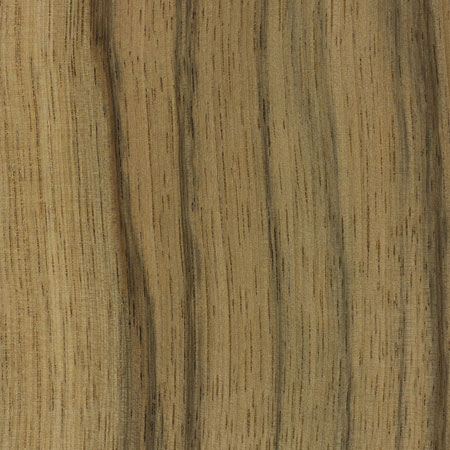
Limba: Heartwood is a light yellowish to golden brown, sometimes with grey to nearly black streaks and veins. Wood with such darker figuring is referred to as black limba, while plain unfigured wood is called white limba. Sapwood is a pale greyish to yellowish brown, not clearly demarcated from the heartwood. Overall color tends to darken with age. Found in tropical western Africa.
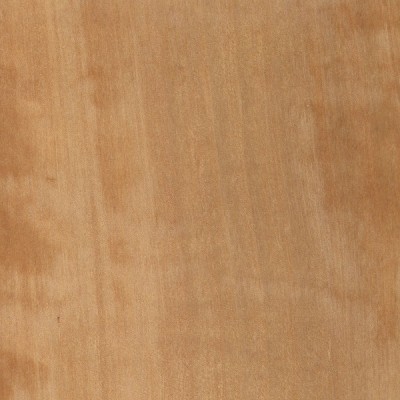
Madrone: Tends to be a cream or pinkish brown color but also may have dark red patches, known for its burl veneer which has many closely-packed clusters of knots and swirled grain. Found on the West Coast, USA. Madrone burl is highly prized as a decorative veneer, while Madrone lumber is a very dense and finely-grained hardwood that's similar in appearance to fruitwoods. The wood burns long and hot, and as a result it is also used for firewood and charcoal.

Mahogany: Honduran Mahogany goes by many names, yet perhaps its most accurate and telling name is Genuine Mahogany. Not to be confused with cheaper imitations, such as Philippine Mahogany, Swietenia macrophylla is what most consider to be the real and true species when referring to "Mahogany." Heartwood color can vary a fair amount with Honduran Mahogany, from a pale pinkish brown, to a darker reddish brown. Color tends to darken with age. Mahogany also exhibits an optical phenomenon known as chatoyancy.
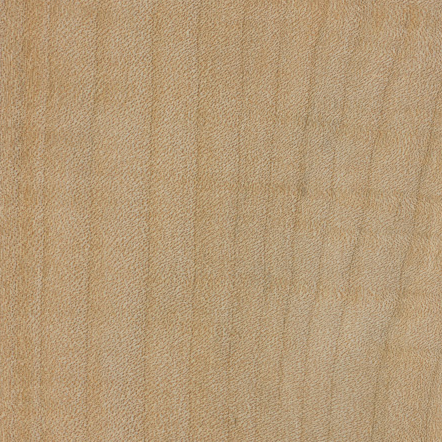
(Soft) Maple: Don't be fooled by the name, most species of soft maple have a hardness and density near black walnut or black cherry. Soft is a relative term, and is only used to differentiate it from hard maple. For many applications, soft maple's hardness is sufficient, and its reduced density generally means it's easier to work with and machine than hard maple. Bigleaf Maple is a commercially important hardwood timber for the United States' west coast, where it is virtually the only commercial maple species in the region.
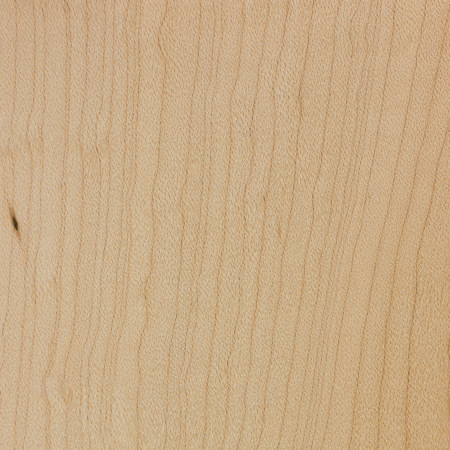
Eastern (Hard) Maple: In tree form, hard maple is usually referred to as Sugar Maple, and is the tree most often tapped for maple syrup. Unlike most other hardwoods, the sapwood of hard maple lumber is most commonly used rather than its heartwood. Sapwood color ranges from nearly white, to an off-white cream color, sometimes with a reddish or golden hue. The heartwood tends to be a darker reddish brown. Birdseye maple is a figure found most commonly in hard maple, though it's also found less frequently in other species. Hard maple can also be seen with curly or quilted grain patterns.
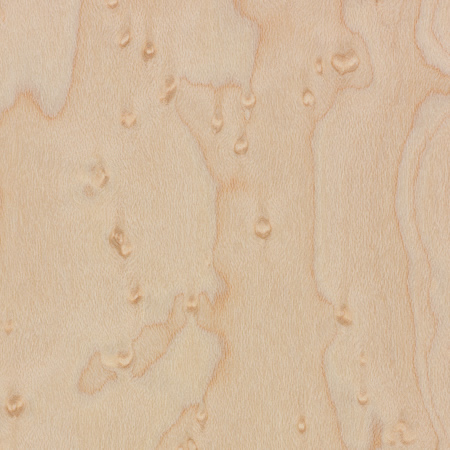
BirdsEye Maple: Creamy white to brown. Not technically a distinct species but rather a growth/grain anomaly almost exclusivly found in hard maple. Called birdseye maple (sometimes written out as bird’s eye) because the tiny knots in the grain resemble small bird’s eyes. The figure is reportedly caused by unfavorable growing conditions for the tree. The tree attempts to start numerous new buds to get more sunlight, but with poor growing conditions the new shoots are aborted, and afterward a number of tiny knots remain.
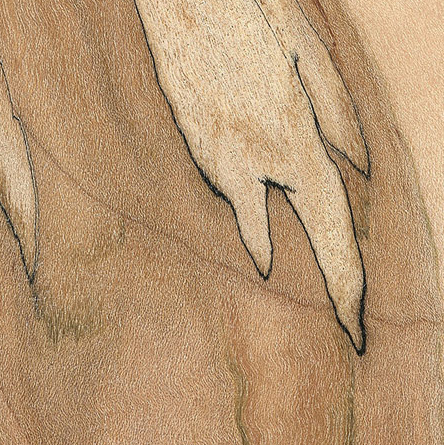
Spalted Maple: Spalting is simply a fungal discoloration of wood, and can be found on a wide range of wood species and genera. It is found in wood that has begun initial stages of decay, and is then subsequently dried (preventing further decay). The partial decay, called spalting, can give the wood dark contrasting lines and streaks where fungus has begun to attack the wood. If the wood has been rescued from the spalting at the right time, the lumber should still be sound and usable, with little to no soft spots or rotten wood.
Maple is a common lumber seen with spalting, as the light colored sapwood provides good contrast for the spalting.
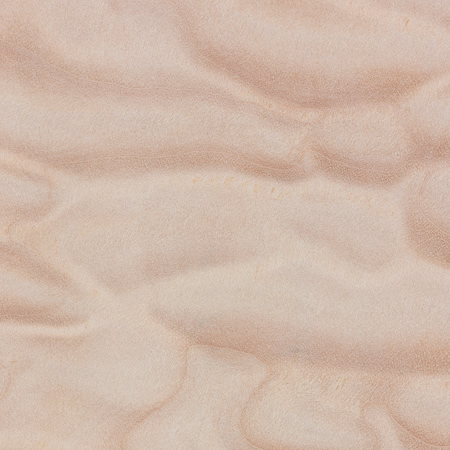
Quilted Maple: A growth anomoly found primarily in soft maples. Quilted maple is so named for its resemblance to patchwork patterns seen on fabric quilts. This burl comes in a variety of light to darker browns and sometimes even a wild pink orange.
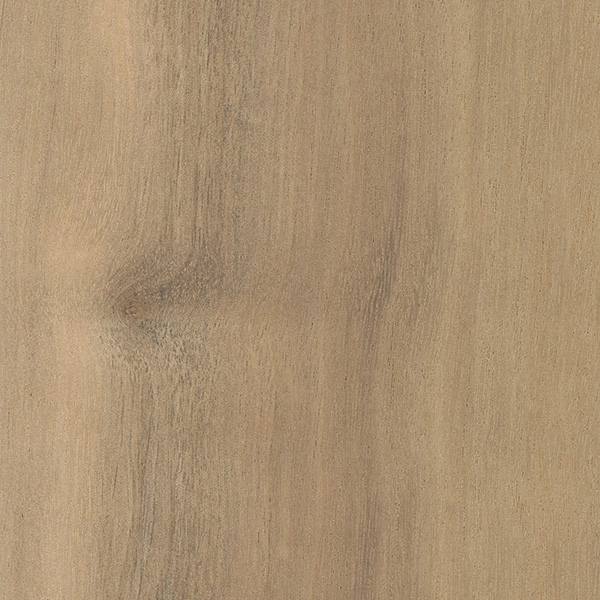
Myrtle: Light brown to gray or live with varied grain, figured wood is common. Found in California and Oregon, USA. Known by a wide variety of local or regional common names. Technically not related to true myrtle, Myrtle is the only species in the Umbellularia genus, and is technically in the Lauraceae family. It's sometimes called California Laurel, and the leaves have a pungent flavor similar to Bay Laurel.
The wood itself has poor strength values for its weight, and is typically used for more aesthetic purposes, rather than in applications where strength is important.
The wood itself has poor strength values for its weight, and is typically used for more aesthetic purposes, rather than in applications where strength is important.
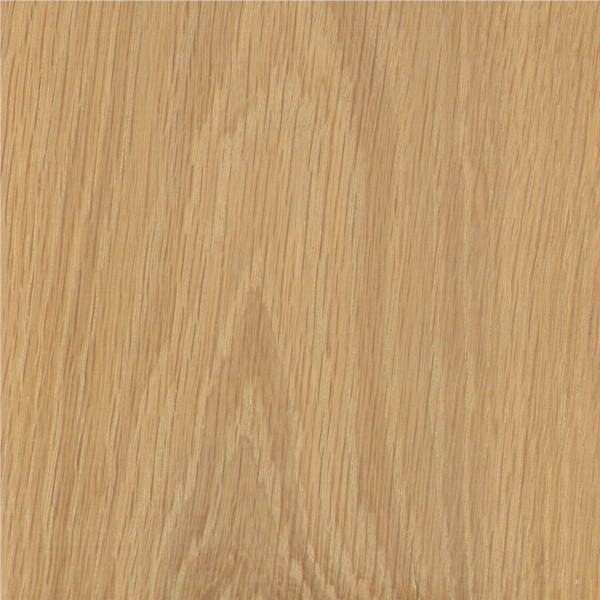
Oak: Few trees have a wider geographical range than the Oak. Very dense, ranging in colors from almost white to a creamy red, it has fairly large pores. Found in the USA.

Olive:Because of the fruit's economic importance, healthy, cultivated Olive trees (O. europaea) aren't felled for lumber; availability is generally limited to pruned branches, trimmings, and diseased/storm damaged orchard trees. Short lumber, turning squares, and burls are occasionally available from wild trees, as well as the closely related East African Olive. Prices are very high.
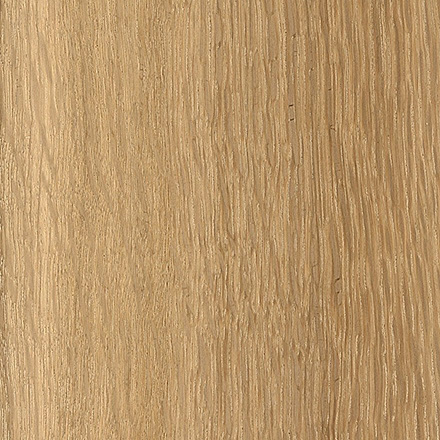
Oregon White Oak: Has a light to medium brown color with medium-to-large pores and a fairly coarse grain. Found in the Pacific Northwest, USA.
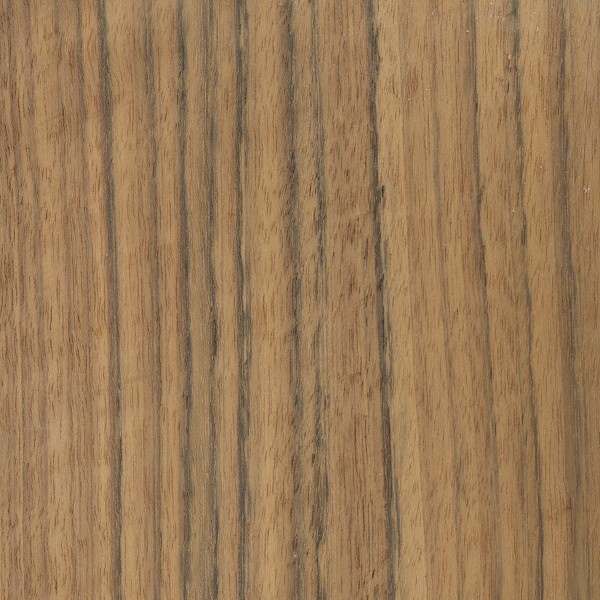
Ovangkol: This wood wins the award for the most commonly-used aliases, with no single name being predominant. When used in guitars, it's most commonly referred to as Ovangkol. Most other woodworkers favor either Shedua or Amazique, while veneer is sometimes sold under the name Mozambique. Varying shades of yellowish to reddish brown with darker brown, gray, or black stripes. Moderately wide sapwood is a pale yellow, clearly demarcated from heartwood. Sometimes seen with a curly or mottled grain pattern. Found in tropical west Africa.
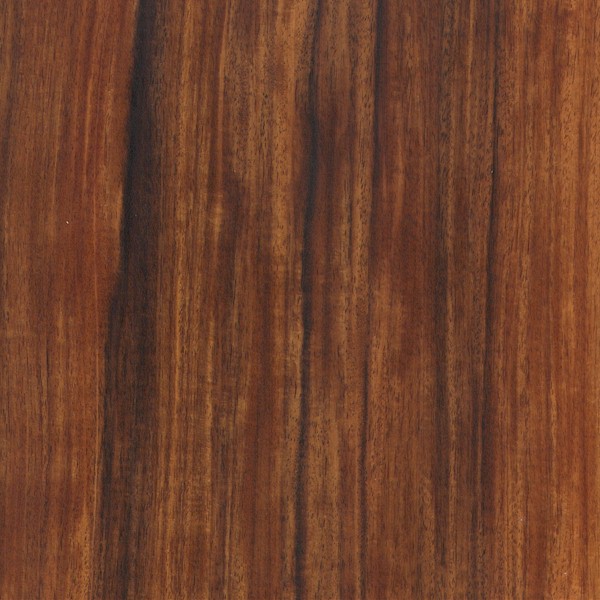
Pau-Ferro: Pau Ferro is a highly durable wood of many names, and is sometimes called Morado: and because the wood is so similar in appearance and working properties to rosewood, it is also sometimes referred to as Bolivian or Santos Rosewood. The wood has been used in various capacities as a substitute for the endangered Brazilian Rosewood. Color can be highly varied, ranging from reddish/orange to a dark violet/brown, usually with contrasting darker black streaks. Narrow sapwood is a pale yellow and is clearly demarcated from the heartwood.
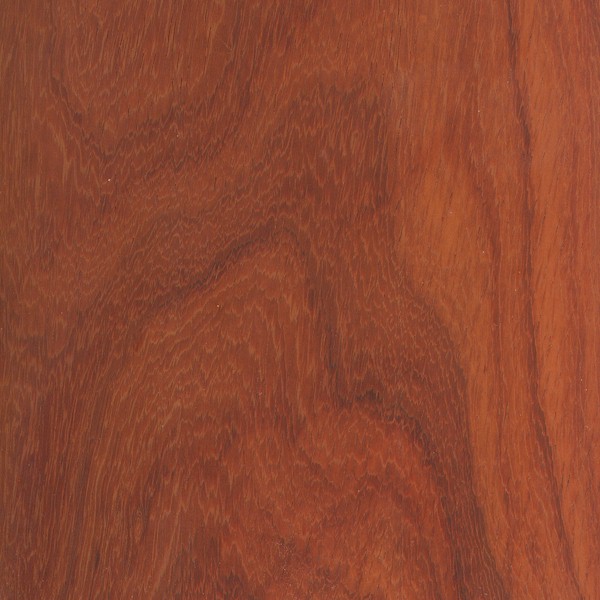
Padauk: Medium to hard wood, deep orange red that ages to a deep orange brown, moderately course grain with straight to interlocking grain patterns. Found in Africa.
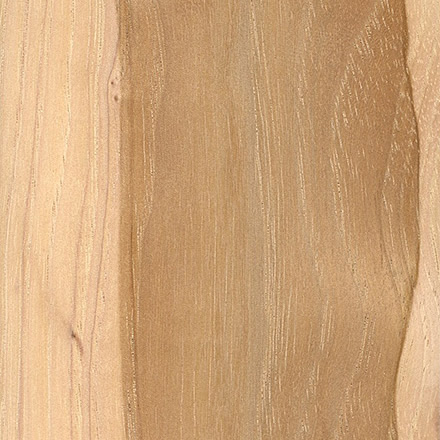

Purpleheart: Medium to hard wood with fairly straight grain and moderately coarse texture, bright purple when cut, darkening to a brownish purple with exposure. Found in Central and South America.

Redwood: Very durable and resistant to decay, typically straight grain with a heartwood ranging from light pinkish brown to a deep reddish brown. Found in California and Oregon, USA.
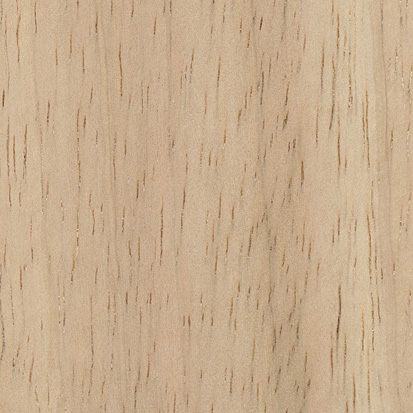
Rubberwood: Despite its common name, Rubberwood isn't any more elastic or soft than comparable hardwoods of similar density/weight. Native to Brazil, but extensively cultivated in tropical regions, especially in Asia. Also refererd to as Plantation Hardwood.
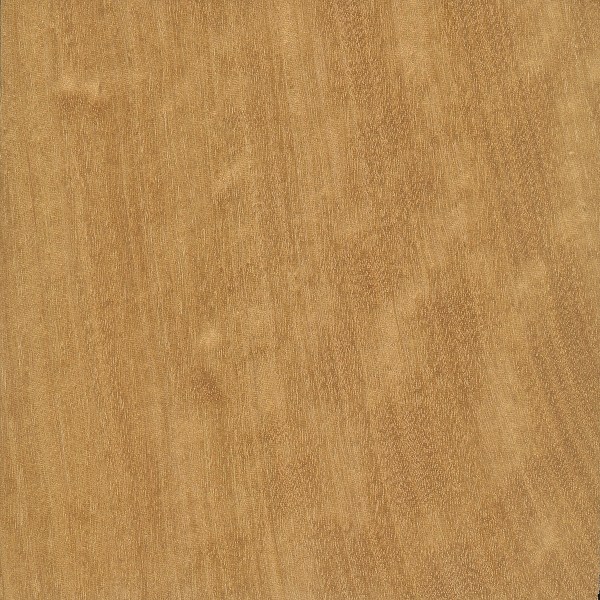
Satinwood: Heartwood ranges from light to golden yellow, to orangish brown. Whitish yellow sapwood generally paler than heartwood, but not always clearly demarcated from heartwood. Frequently seen with a mottled or rippled grain pattern, resembling ripples in satin fabric, lending to its name satinwood. Most genuine satinwood offered for sale today is the East Indian variety.
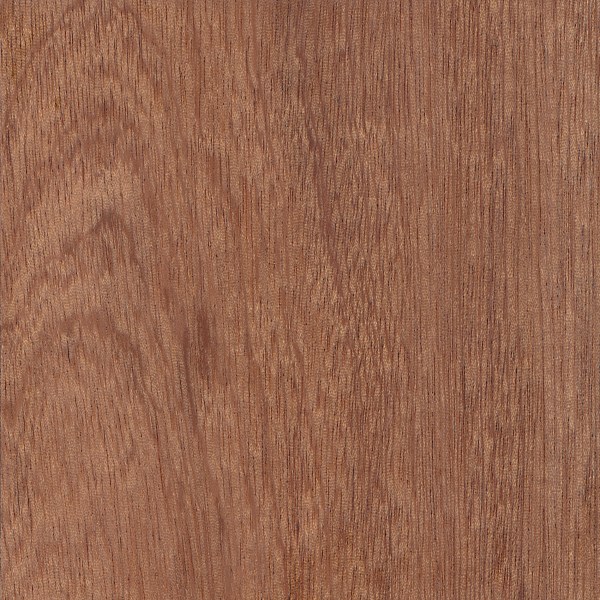
Sapele: Heartwood is a golden to dark reddish brown. Color tends to darken with age. Besides the common ribbon pattern seen on quartersawn boards, Sapele is also known for a wide variety of other figured grain patterns, such as: pommele, quilted, mottled, wavy, beeswing, and fiddleback. Sapele is a commonly exported and economically important African wood species. Usually pronounced (sah-PELL-ey) or (sah-PEEL-ey).
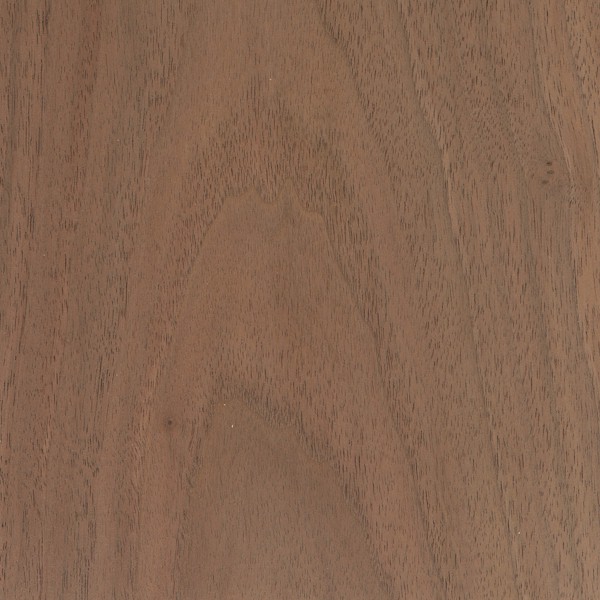
Black Walnut: Dark brown wood with wavy and curly grain, colors of light yellow brown to dark chocolate brown and purplish black. Found in the United States.
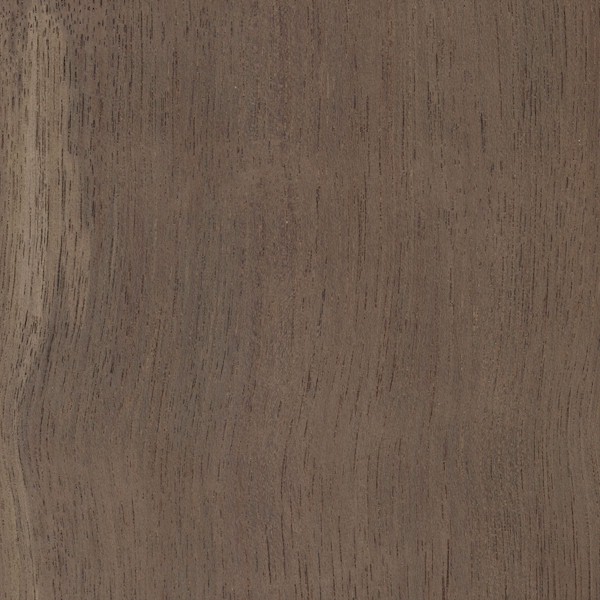
Peruvian Walnut: Tends to be darker in color than walnut species from elsewhere, with a deep chocolate brown color, sometimes with a purplish hue and streaks of lighter-colored wood throughout, medium to coarse texture and usually straight grain. Found in Peru.
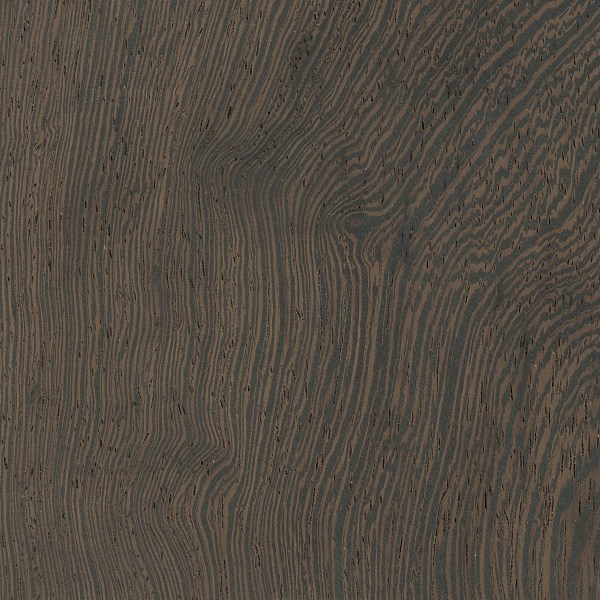
Wenge: Wenge is medium brown, sometimes with a reddish or yellowish hue, with nearly black streaks. Upon application of a wood finish (particularly an oil finish) the wood can become nearly black. Usually pronounced WHEN-gii or WHEN-ghay, the wood has excellent strength and hardness properties, and is also dark enough to be used as a substitute for ebony.
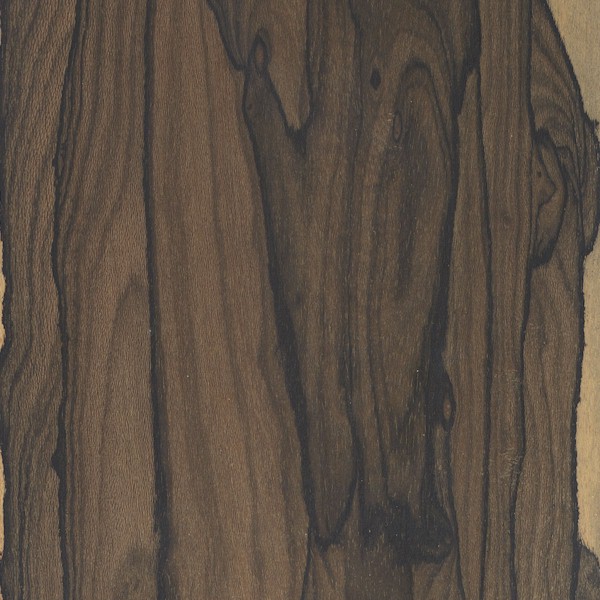
Ziricote: Color ranges from medium to dark brown, sometimes with either a green or purple hue, with darker bands of black growth rings intermixed. Ziricote has a very unique appearance, which is sometimes referred to as "spider-webbing" or "landscape" grain figure. Quartersawn surfaces can also have ray flakes similar in appearance to those found on quartersawn Hard Maple. The pale yellowish sapwood is sometimes incorporated into designs for aesthetic effect, or to cut down on wastage.
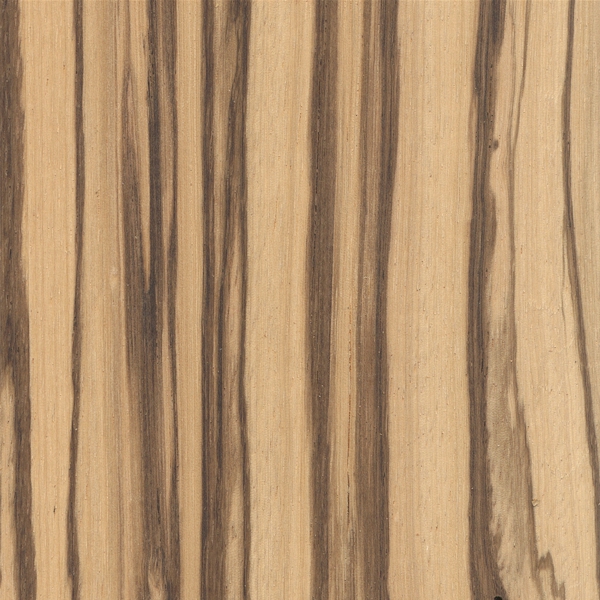
Zebrawood: Medium to heavy hardwood with coarse grain texture, light tan to golden yellow with streaks of dark brown to black. Found in Africa.
The images and portions of text on this page belong to The Wood Database.com and are used soley for educational purposes.

